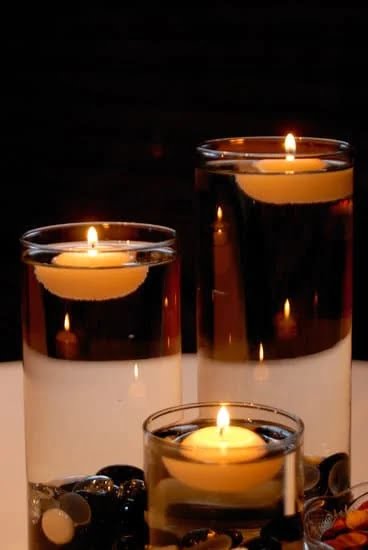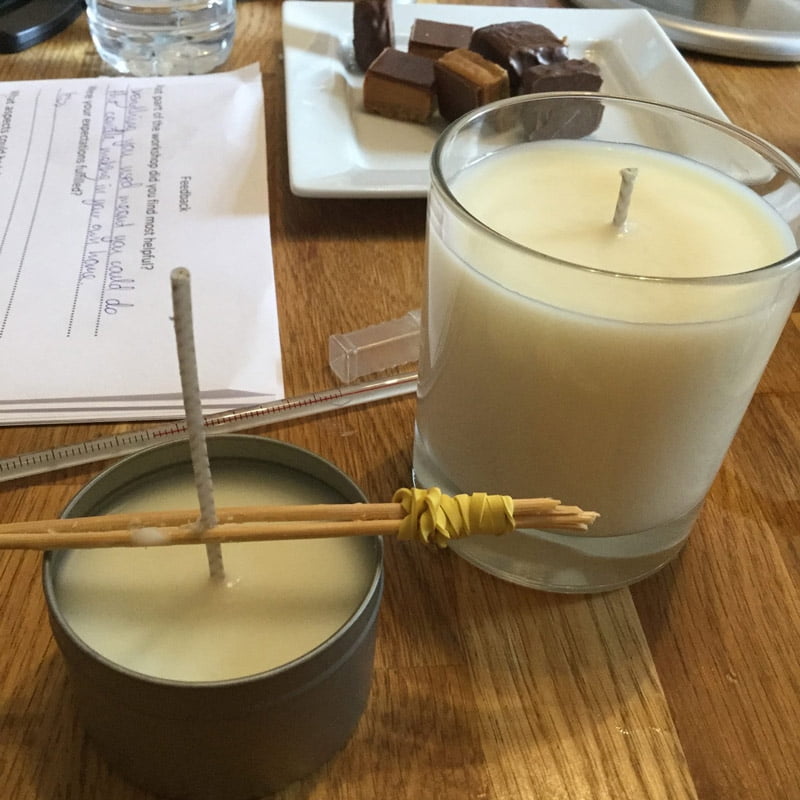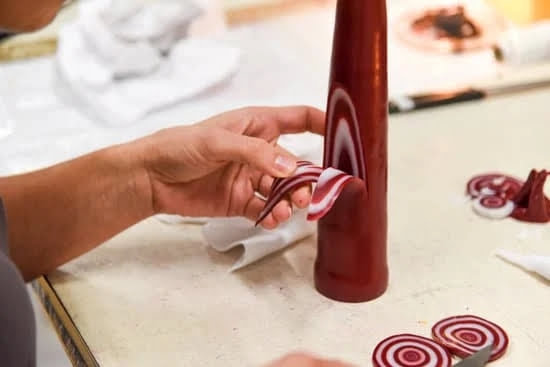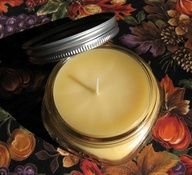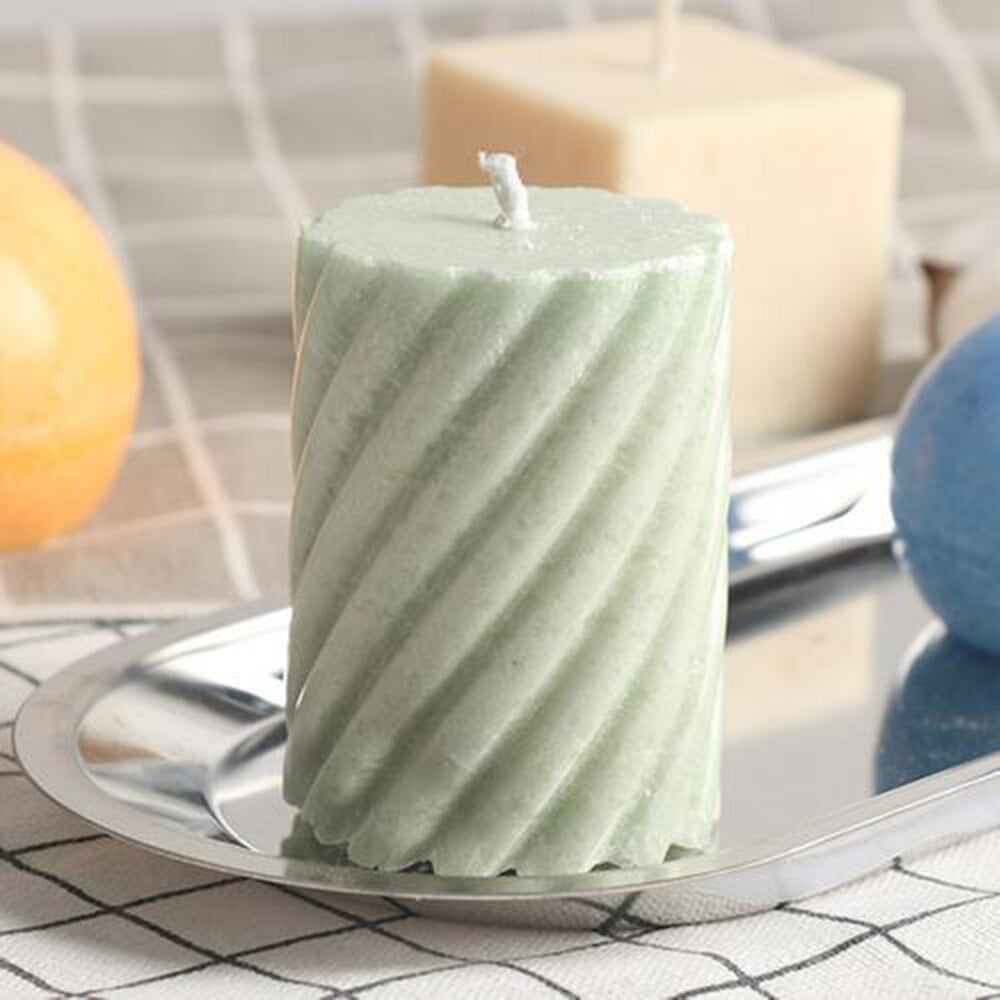Candle making is a delicate art that requires precise temperature control for successful results. The temperature at which wax is melted, fragrance oils are added, and molds are filled determines the quality and appearance of the final product. This is where thermometers come into play, serving as essential tools in the candle making process. They allow artisans to monitor and maintain optimal temperatures throughout each stage of production.
Temperature control is crucial in candle making because it directly affects the outcome of candles. If the wax is too hot when poured into molds, it can lead to uneven cooling and cracking. On the other hand, if the wax is not heated enough, it may not fully adhere to the wick or have unsightly air bubbles.
Additionally, certain fragrances or dyes require specific temperature ranges to activate their scents or colors properly. Hence, using thermometers helps ensure that each candle achieves its desired appearance, scent, and burn time.
A common question among novice candle makers is whether any thermometer can be used for this craft or if specific types are required. In this article, we will delve into the significance of thermometers in candle making and address this query: Can you use any thermometer for candle making?
By exploring different types of thermometers available in the market, understanding their functionalities and limitations, and discussing factors to consider when choosing a thermometer for candle making purposes, we aim to guide aspiring candle makers towards selecting suitable tools for their craft.
Understanding the Different Types of Thermometers
Thermometers play a crucial role in candle making processes, as they help ensure that the wax is heated to the right temperature and cooled properly for optimal results. Understanding the different types of thermometers available in the market can help candle makers choose the best one for their specific needs.
There are several types of thermometers commonly used in candle making:
- Dial Thermometers: These thermometers have a dial display that indicates the temperature. They are easy to read and often come with a probe that can be inserted into the wax or other materials.
- Digital Thermometers: Digital thermometers provide precise temperature readings on an LCD screen. They are quick to respond and offer accurate measurements, making them popular among candle makers.
- Infrared Thermometers: Infrared thermometers use a laser to measure the surface temperature from a distance without touching it. They are ideal for measuring the temperature of melting pots or containers without having to dip a thermometer into the wax.
When choosing a thermometer for candle making, it is important to consider factors such as accuracy, convenience, and durability. Accuracy is particularly crucial because even slight variations in temperature can affect the quality and performance of candles. It is recommended to invest in a high-quality thermometer that provides accurate readings consistently.
In addition, consider the temperature range required for your specific candle making techniques. Some thermometers may not be suitable for higher temperatures used when working with certain waxes or additives. Also, take into account the type of material your thermometer will come into contact with, as some materials may react adversely to certain chemicals found in candles.
Furthermore, look for additional features that may enhance your experience and effectiveness when using a thermometer. Some thermometers come with alarm settings or memory functions that allow you to set target temperatures or record previous readings for future reference.
By understanding these different types of thermometers and considering essential factors mentioned above, you can make an informed decision on which thermometer best suits your candle making needs.
Importance of Accuracy in Candle Making Thermometers
In the art of candle making, accuracy is paramount. The temperatures involved in the candle making process can greatly affect the outcome of your candles. From the melting and pouring of the wax to the cooling and setting stages, maintaining precise temperatures is crucial for achieving desired results. This is where accurate thermometers play a vital role.
Accurate readings from thermometers are essential for ensuring that the wax is heated or cooled to the right temperature, allowing it to set properly and create a smooth, even finish. Inaccurate readings can lead to poor quality candles with problems such as uneven burning, cracking, or improper scent throw.
One of the major consequences of temperature inconsistency during the candle-making process is poor adhesion between layers. If each layer of wax does not cool at a consistent temperature, they may not bond properly and could separate when burning the candle. This would result in an undesirable appearance and potential safety hazards.
To avoid these issues, it is important to invest in a reliable thermometer that provides accurate readings. There are various types of thermometers available in the market that cater specifically to candle making needs. It is recommended to choose a thermometer with a wide temperature range suitable for both heating and cooling processes involved in candle making.
When selecting a thermometer for candle making purposes, consider choosing one that is made from materials compatible with wax and heat-resistant. Glass thermometers are commonly used due to their accuracy and durability. Digital thermometers with probe-style designs are also popular as they provide easy-to-read displays and allow you to measure temperatures at different depths within your melted wax.
Factors to Consider When Choosing a Thermometer for Candle Making
When it comes to choosing a thermometer for candle making, there are several important factors that should be taken into consideration. The right thermometer can greatly impact the outcome of your candles, so it’s crucial to select one that meets your specific needs and requirements.
Suitable Temperature Range
One of the first factors to consider when choosing a thermometer for candle making is the suitable temperature range required for your particular process. Different types of candles may require different temperature ranges, so it’s important to choose a thermometer that can accurately measure within the desired range.
For example, if you’re making soy candles, you’ll want a thermometer that can measure temperatures between 100 and 180 degrees Fahrenheit. On the other hand, if you’re making beeswax candles, you’ll need a thermometer that can handle higher temperatures up to 200 degrees Fahrenheit or more.
Materials Used in Candle Making
The materials used in candle making can also impact the choice of thermometer. Certain thermometers may be better suited for specific materials due to their durability or compatibility with certain substances. For instance, if you’re working with hot wax and need a waterproof option, a digital waterproof thermometer may be a good choice. Alternatively, if you prefer traditional glass thermometers but are concerned about breakages, consider using one with protective casing.
Another consideration is whether the material being used is opaque or transparent. If using an opaque vessel for your candle making process, such as tin containers or ceramic molds, consider using an infrared laser gun-style thermometer which allows you to measure surface temperatures without direct contact.
Additional Features
In addition to temperature range and material compatibility, there are other features that can enhance the convenience and effectiveness of a thermometer for candle making purposes. Some thermometers come with timers or alarms to alert you when certain temperatures are reached or maintained over a specified period of time. This can be particularly helpful for processes that require precise temperature control, such as adding fragrance oils or pouring the wax.
Another feature to consider is the visibility of the thermometer’s display. If you’ll be working in low-light conditions or from a distance, a thermometer with a backlit display or large digits may make it easier to read and monitor the temperature accurately.
By considering factors such as suitable temperature range, material compatibility, and additional features, you can choose a thermometer that not only meets your needs but also enhances the candle making process. Taking the time to research and invest in an appropriate thermometer will ensure accurate temperature readings and ultimately lead to successful candle making results.
Commonly Used Thermometers in Candle Making
When it comes to candle making, using the right thermometer is crucial to achieving the desired results. There are several types of thermometers commonly used in the candle making industry, each with its own features and suitability for specific techniques. In this section, we will examine some of the popular thermometers used by professionals in the field and provide an in-depth review of their accuracy and effectiveness.
One widely used thermometer in candle making is the mercury-in-glass thermometer. This traditional thermometer consists of a glass tube filled with mercury that expands or contracts based on temperature changes. Mercury-in-glass thermometers are known for their high level of accuracy and reliability, making them a favorite among experienced candle makers. However, it is important to note that these thermometers can be fragile and need to be handled with care.
Another popular option is the digital thermometer, which uses electronic sensors to measure temperature readings. Digital thermometers are known for their quick response time and ease of use. They provide accurate readings within seconds, eliminating the need for lengthy waiting times before adding fragrance oils or other additives to the wax. Some digital thermometers even have memory functions that allow users to store previous measurements for future reference.
Infrared thermometers have also gained popularity in the candle making industry due to their non-contact measuring capabilities. These thermometers use infrared technology to detect surface temperatures without physically touching the hot wax or container. This feature makes them especially useful when working with large batches or when multiple temperature readings are required simultaneously.
Ultimately, the choice of thermometer depends on personal preference and specific needs. It is important to consider factors such as accuracy, ease of use, durability, and cost when selecting a thermometer for candle making. By understanding the different options available and considering individual requirements, candle makers can find a thermometer that suits their needs and enhances their overall candle making process.
CASE STUDY:
Maria, an experienced candle maker, relies on a digital thermometer for her candle making business. She appreciates its accuracy and quick response time, which allows her to save time during the production process. Additionally, the memory function of her thermometer allows her to keep track of temperature readings from previous batches, helping her maintain consistency in her candles. Maria finds that the digital thermometer is an invaluable tool that has greatly improved the efficiency and quality of her candle making.
Can You Use Any Thermometer for Candle Making? Evaluating the Options
Temperature control is a critical factor in the candle making process, as it directly influences the quality and outcome of the candles. To ensure accurate temperature measurement, it is necessary to use a thermometer specifically designed for candle making. This section will evaluate the options available and discuss the advantages and limitations of different types of thermometers.
When it comes to choosing a thermometer for candle making, it is important to consider factors such as accuracy, temperature range, and material compatibility. There are several types of thermometers commonly used in candle making processes:
- Glass Thermometers: Glass thermometers are a popular choice among candle makers due to their accuracy and durability. These thermometers consist of a glass tube filled with mercury or alcohol that expands or contracts based on temperature changes. They provide precise readings and can withstand high temperatures often required in candle making.
- Digital Thermometers: Digital thermometers are convenient and easy to read. They use electronic sensors to measure temperature accurately. Many digital thermometers have additional features such as programmable alarms, memory functions, and adjustable probes, making them versatile for different candle making techniques.
- Infrared Thermometers: Infrared (IR) thermometers are non-contact devices that measure temperature by detecting the thermal radiation emitted by an object. They are ideal for quick temperature checks during various stages of candle making without physically touching the wax or container.
| Thermometer Type | Advantages | Limitations |
|---|---|---|
| Glass Thermometer | – Accurate readings
| – Fragile and prone to breakage
|
| Digital Thermometer | – Easy to read
| – May require battery replacement
|
| Infrared Thermometer | – Non-contact measurement, minimizing contamination
| – Limited accuracy compared to glass or digital thermometers
|
Ensuring Proper Usage of Thermometers in Candle Making
When it comes to candle making, proper usage of thermometers is crucial to achieving the desired results. Temperature control plays a significant role in determining the quality, appearance, and performance of candles. Therefore, it is important to use thermometers effectively throughout the candle-making process.
To ensure accurate temperature measurements, there are several steps that can be followed when using a thermometer for candle making. First, it is essential to choose a reliable and calibrated thermometer that is specifically designed for candle making or has a suitable temperature range for this purpose. Different materials used in candle making, such as beeswax or soy wax, may require different temperature ranges for melting and pouring.
Once a suitable thermometer has been selected, it should be properly calibrated before each use to ensure accurate readings. This can be done by comparing the thermometer’s reading with a known accurate reference at specific temperatures. Additionally, it is important to handle the thermometer with care to avoid any damage or contamination that could affect its accuracy.
During the candle-making process, the thermometer should be inserted into the wax mixture at various stages to monitor and control the temperature. It is recommended to stir the wax while taking measurements to ensure even heat distribution. This will help achieve consistent results and prevent overheating or underheating of the wax.
Taking Your Candle Making to the Next Level with Advanced Thermometers
Advanced thermometers offer enhanced features and functionalities that can take your candle making to the next level. These thermometers are specifically designed for professional candle makers who require precision, efficiency, and consistency in their processes. In this section, we will explore the benefits of using advanced thermometers and discuss the additional features they offer.
Enhanced Precision
One of the key advantages of using advanced thermometers in candle making is the enhanced precision they provide. These thermometers often have a higher accuracy rating compared to standard thermometers. This allows candle makers to achieve more precise temperature readings, ensuring that the wax is heated or cooled to the exact desired temperature. By maintaining precise temperatures throughout the candle-making process, professionals can achieve consistent results and produce high-quality candles.
Efficiency and Time-Saving
Advanced thermometers also offer features that promote efficiency and save time during candle making. Some models may have a rapid response time, providing almost instant temperature readings. This eliminates the need for lengthy waiting periods and allows candle makers to work more efficiently. Additionally, certain advanced thermometers may have built-in timers or alarms that alert users when specific temperatures are reached. This eliminates the need for constant monitoring and ensures that critical temperature milestones are not missed.
Add-On Features
Aside from enhanced precision and efficiency, advanced thermometers often come with additional features that can further assist candle makers in their processes. For example, some models may have dual probes or multiple measurement settings, allowing users to monitor multiple aspects of their candle making simultaneously. Others may offer wireless connectivity options or compatibility with smartphone applications, enabling remote monitoring and data logging capabilities. These add-on features provide greater convenience, flexibility, and control over the entire candle-making process.
Conclusion
In conclusion, choosing the right thermometer for candle making is crucial to achieve successful and desired results. Throughout this article, we have explored the significance of using thermometers in candle making processes and the impact of temperature control on the outcome of candles. We have also discussed the different types of thermometers available in the market, their pros and cons, and the importance of accuracy in temperature readings.
Temperature inconsistency during the candle-making process can lead to poor quality candles. Inaccurate readings may result in candles that do not burn properly or have an uneven texture. It is essential to select a thermometer that provides accurate measurements to ensure that the wax is heated and cooled at the correct temperatures.
When choosing a thermometer for candle making, there are several factors to consider such as the suitable temperature range required for candle making, the materials used in candle making, and additional features that enhance convenience and effectiveness. It is also worth exploring popular thermometers used by professionals in the industry as they often offer accurate readings and have proven effective in real-life case studies.
Frequently Asked Questions
Can a meat thermometer be used for candle making?
A meat thermometer is not typically suitable for candle making. Candle making requires specific temperature precision, and meat thermometers are designed for use in the food industry, focusing on measuring the internal temperature of cooked meats.
They may not have a wide enough temperature range or be calibrated to accurately assess the higher temperatures necessary for melting and pouring candle wax. It is best to use a thermometer specifically designed for candle making to ensure accurate temperature readings.
Can you use candy thermometer for candle making?
While a candy thermometer may be more suitable for candle making than a meat thermometer, it is still not the most ideal choice. Candy thermometers are primarily used for measuring the temperature of heated sugar syrups when making candies or confections.
Although they can withstand higher temperatures than meat thermometers, they may not provide precise or accurate readings within the temperature range required in candle making. To ensure optimal results, using a dedicated candle-making thermometer is recommended.
What thermometer is most accurate for candle making?
The most accurate thermometer for candle making is usually a dedicated wax or pouring thermometer explicitly created for this purpose. These thermometers are specially designed to withstand high temperatures and provide precise readings within the specific temperature range required in candle making processes, such as heating and cooling wax, adding fragrance oils, or determining proper pouring consistency.
Wax thermometers often feature a longer probe that reaches deep into containers and can accurately gauge the desired temperature range with great accuracy, resulting in consistently well-made candles. Investing in an appropriate candle-making thermometer ensures greater precision and success in your candle-making endeavors.

Welcome to my candle making blog! In this blog, I will be sharing my tips and tricks for making candles. I will also be sharing some of my favorite recipes.

